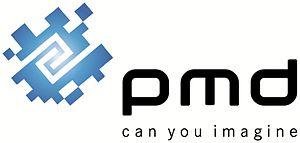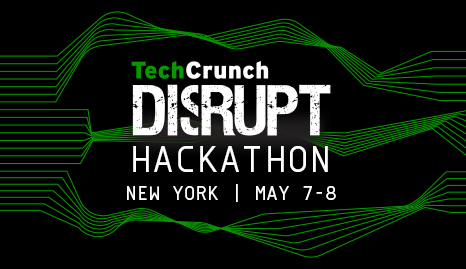 The world of 3D printing delivers excitement for makers on every level. Whether you are just discovering what 3D printing means and how the process works, or are in the midst of creating a complicated multipiece project, it’s easy to become rather euphoric about the magic of this new technology, and realize that yes, you too can easily get started. Scandy is one of those companies that understands the enthusiasm that accompanies this technology, and they work to enhance it and blow your mind just a little bit more with each new feature, as we’ve followed from super affordable 3D printing services to panoramic spheres.
The world of 3D printing delivers excitement for makers on every level. Whether you are just discovering what 3D printing means and how the process works, or are in the midst of creating a complicated multipiece project, it’s easy to become rather euphoric about the magic of this new technology, and realize that yes, you too can easily get started. Scandy is one of those companies that understands the enthusiasm that accompanies this technology, and they work to enhance it and blow your mind just a little bit more with each new feature, as we’ve followed from super affordable 3D printing services to panoramic spheres.
Now Scandy is announcing a new API for their 3D scanning and 360º panorama capture platform which will be able to pull in 3D content generated by users. According to Scandy, developers who are involved in making VR/AR applications can search Scandy to find suitable 3D scans or 360º panoramas, made easy with the hashtags and content descriptions users add on their social networks, allowing developers to easily query and find 3D items that are relevant.
Because of the energy surrounding the VR/AR industry, and so many options and opportunities therein, Scandy wanted to find a way to offer more to users in that area, most especially with the popularity of new technology like the Google Cardboard Camera as well as VR headsets.
“Seeing the growing demand and excitement around the VR/AR space, Scandy saw an opportunity to fulfill a very crucial piece of this ecosystem, content,” states the team in their latest press release.
This content, flowing via Scandy, is unique and highly relevant because photos from their platform were meant to be viewed in 3D. The Scandy team points out too that so many others are switching to this idea, allowing for the 2D world to become quite outdated. A variety of new cameras on the market, from Samsung Gear 360 to LG 360, allow users everywhere to enjoy the panoramic 360 option as well, and it’s undeniable that the VR industry is hot. Numerous developers will be getting in on all this too, from May 7-8 at the NY TechCrunch Hackathon.
“Scandy will provide an alpha API for developers to query the full Scandy platform and return 3D files that can be easily imported to Unity VR apps,” said the team in their press release. “Scandy will also be demo-ing their 3D scanning app for Android.”
 Sponsor pmdtechnologies (also the contest host) will be showing off and allowing participation with their CamBoard pico flexx 3D depth sensor. According to pmdtechnologies, this sensor will allow developers at the hackathon to use their VR headsets in connection with a ‘gesture control library.’ Scandy and pmdtechnologies have been working together to allow their ‘pico flexx’ not just to create 3D scans, but to do so in real time for smartphones (Android). The software should be available as a licenseable SDK within several months.
Sponsor pmdtechnologies (also the contest host) will be showing off and allowing participation with their CamBoard pico flexx 3D depth sensor. According to pmdtechnologies, this sensor will allow developers at the hackathon to use their VR headsets in connection with a ‘gesture control library.’ Scandy and pmdtechnologies have been working together to allow their ‘pico flexx’ not just to create 3D scans, but to do so in real time for smartphones (Android). The software should be available as a licenseable SDK within several months.
pmd has also actually been working as Google’s ‘depth sensing partner’ regarding Project Tango, now available for those who are Cardboard developers. pmd has also been partnering with Gestigon for making touchless interaction available to their users. pmd is looking forward to the event as they will show off the pmd CamBoard pico flexx 3D Time-of-Flight (TOF) camera, which is attached to the Cardboard. This new technology offers depth data and a point cloud, with the enriching content being supplied from Scandy.
“We’re absolutely excited about our first Hackathon and can’t wait to see the hackers put their hands on the technology – and into the VR world! The outcomes will be great and game-changing, that’s already foreseeable,” said Jochen Penne, Director Business Development at pmd.
Hackers will get a Samsung S7 as development platform, and experienced Unity developers should be quite comfortable with the Gestigon Carnival gesture recognition Unity Asset. pmd says that developers will also have access to their Royale C++ API to directly get to the pico flexx TOF camera’s depth images and point clouds. ToF technology with Gestigon’s Carnival SDK allows hackers to realize where users’ hands and fingertips are.
“We will equip the hackers with everything they need to build new and exciting software,” says the pmg team. “The development kit will enable them to use the setup for hand tracking, gesture recognition and much more. But what they will do with it in the end, is all up to them.”
This Hackathon sounds extremely exciting. Discuss in the Lots of Virtual Reality at TechCrunch Hackathon forum over at 3DPB.com.
Subscribe to Our Email Newsletter
Stay up-to-date on all the latest news from the 3D printing industry and receive information and offers from third party vendors.
Print Services
Upload your 3D Models and get them printed quickly and efficiently.
You May Also Like
Metal Powder Supplier Elementum 3D Added to $46B Air Force Contract
Elementum 3D, a Colorado-based developer and supplier of metal powders used in additive manufacturing (AM), announced that the company has been added to the vendors list in the fourth on-ramp...
Ursa Major Lands $28.6M AFRL Deal for 3D Printed Draper Engine Flight Demo
The US Air Force Research Laboratory’s (AFRL’s) Rocket Propulsion Division at Edwards Air Force Base has awarded a $28.6 million contract to Ursa Major for follow-on work related to the...
3D Printing Financials: Rocket Lab’s Record-Breaking Year and Over 20 Launches Coming in 2025
Rocket Lab (Nasdaq: RKLB) closed 2024 with its best year yet. The company launched more rockets, signed more contracts, and expanded deeper into spacecraft and satellite production than ever before....
US Air Force Taps Beehive to Study 3D Printed Jet Engines
Propulsion 3D printing firm Beehive Industries secured a contract from the U.S. Air Force Life Cycle Management Center through SOSSEC. SOSSEC is a company that manages Other Transactions Authority (OTA)...



































